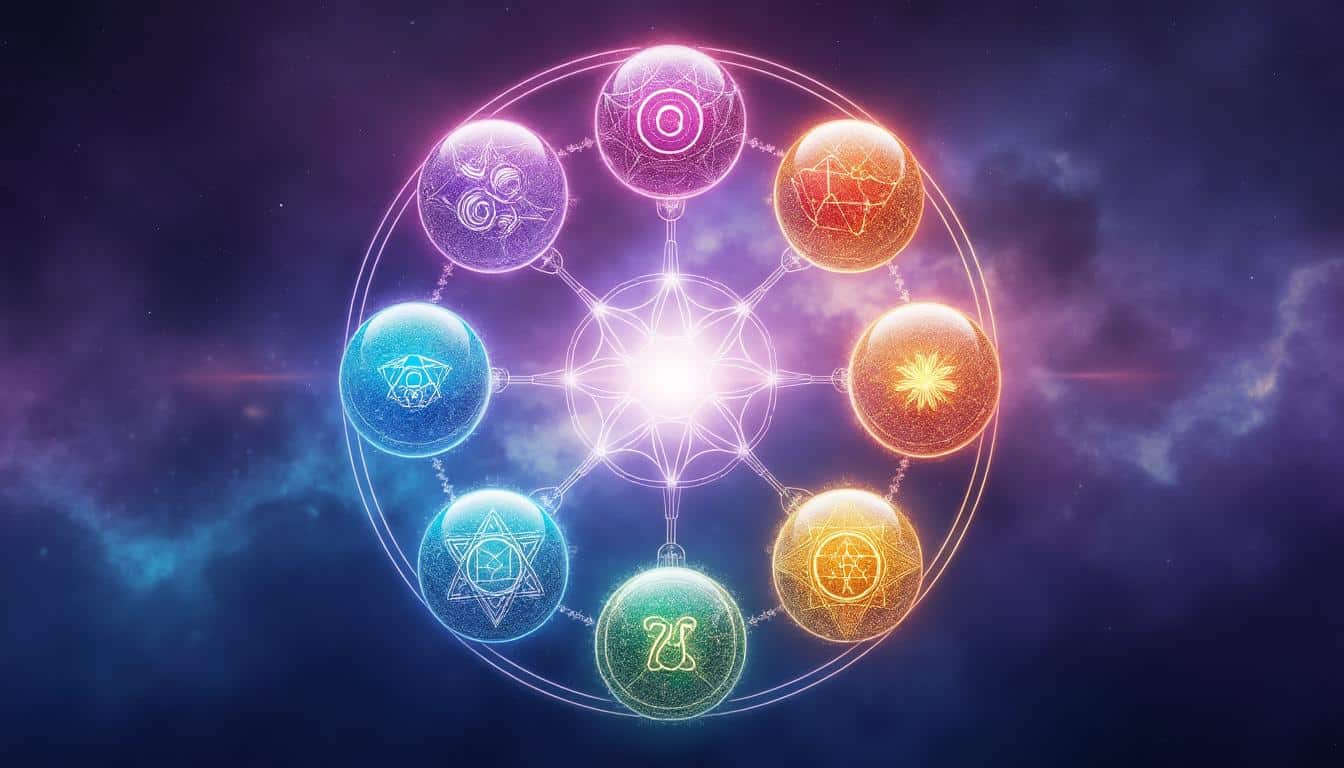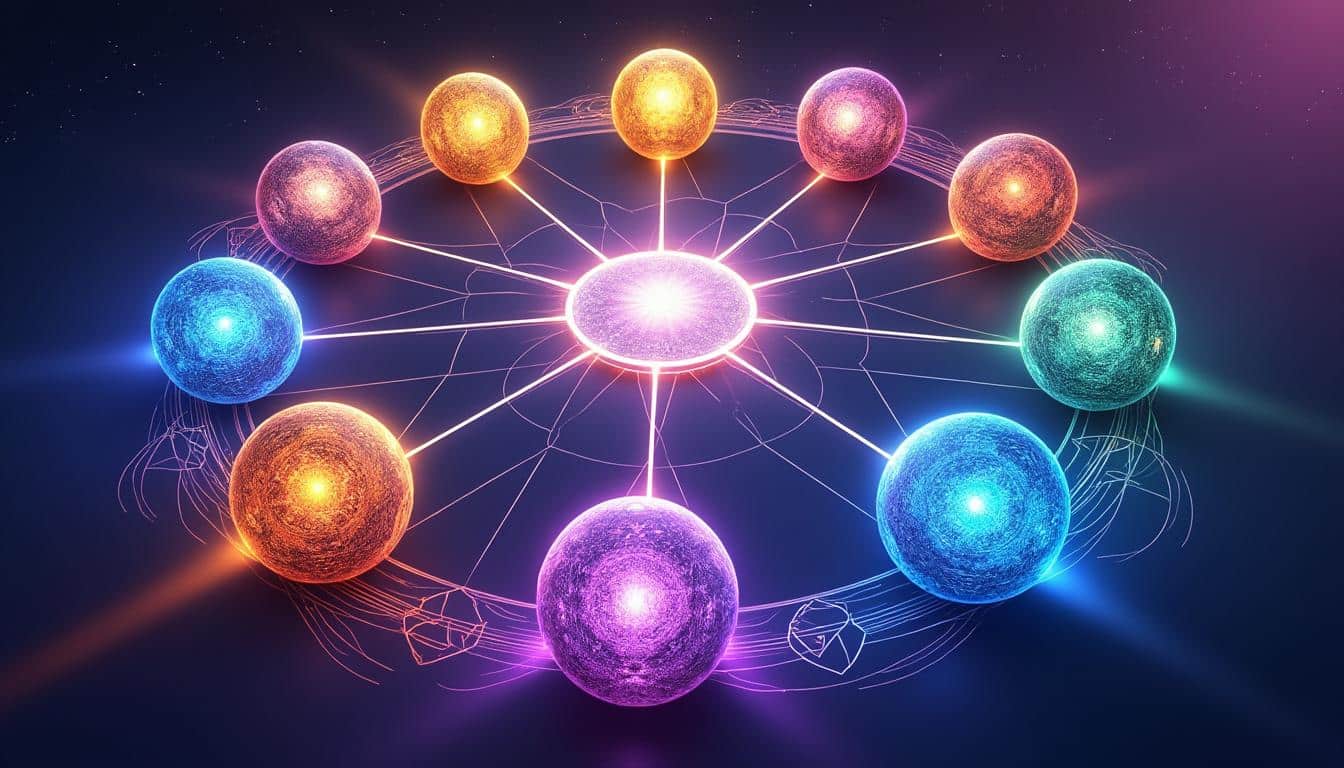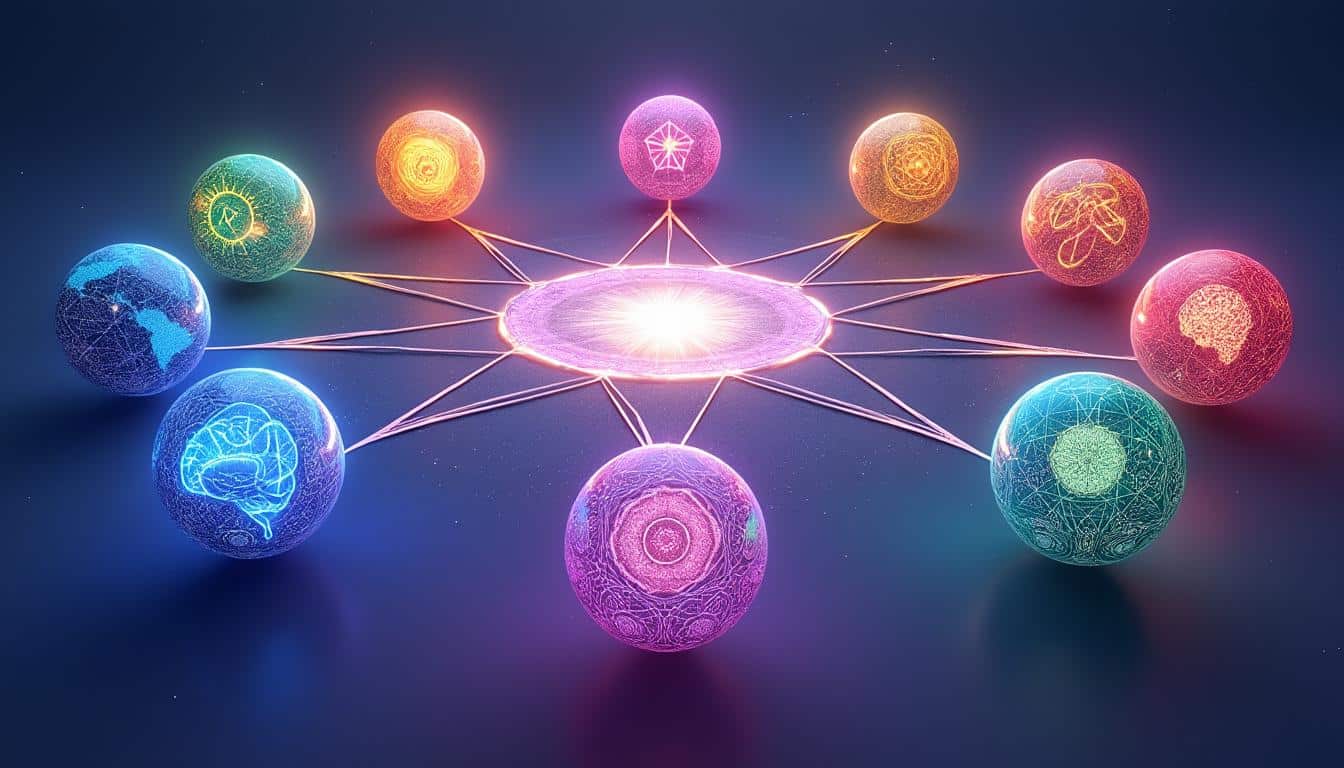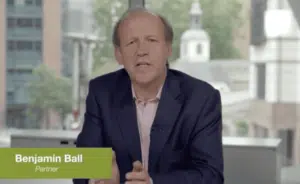The challenges of daily life often confront us with our deepest reactions. Understanding how we manage conflicts and disappointments is essential for our personal growth. This is where the Harmonic Triad of the Enneagram comes into play.
This innovative approach classifies individuals into three main groups, each reacting differently to stressful situations. Some openly express their emotions, others favor rational problem-solving, while others adopt an optimistic perspective. By exploring these dynamics, we can better understand our own behaviors and those of others. This knowledge paves the way for more harmonious interactions and better management of daily challenges.

The harmonic groups of the Enneagram provide an essential key to better understand human motivations. By classifying the nine types of the Enneagram into three distinct categories, these groups reveal the natural responses of individuals to challenges and conflicts.
The first group, the Reactive group, includes types that express their emotions intensely and openly when faced with stressful situations. These individuals seek emotional authenticity and want others to feel what they experience. The second group, the Competent group, is characterized by a pragmatic and solution-oriented approach to problems. Individuals in this group prioritize rationality and efficiency, often at the expense of emotional expression.
Finally, the Positive Optimism group includes those who seek to maintain a positive attitude and see the bright side of things, even in times of difficulty. These people use their optimism to overcome obstacles and inspire others. Understanding these harmonic groups not only deepens self-knowledge but also enhances interpersonal relationships by fostering communication tailored to different motivations and reactions.

Understanding the harmonic groups of the enneagram is essential for grasping the various human motivations. The enneagram, a powerful tool for personal development, divides personalities into nine distinct types, each with its own strengths and challenges. The harmonic groups add an additional layer by categorizing these types into three triads: the reactive group, the competent group, and the optimism group. This classification allows us to better understand how each type reacts to conflicts, disappointments, and situations where their needs are not met. By exploring these groups, one can not only enhance personal understanding but also optimize interactions with others. This article will guide you through the different dynamics of the harmonic groups, illustrating each section with concrete examples and relevant resources to deepen your knowledge.
the harmonic groups of the enneagram
The harmonic groups of the enneagram are divided into three main categories: the reactive group, the competent group, and the optimism group. Each group contains types with similar reactions to emotional and situational challenges. The reactive group, consisting of types 4, 6, and 8, expresses its emotions intensely and directly. The competent group, encompassing types 1, 3, and 5, prefers to approach problems in a rational and pragmatic way. Finally, the optimism group, made up of types 2, 7, and 9, tends to seek the positive and avoid conflicts. This classification offers a clear perspective on the internal mechanisms of each type, thus facilitating better management of interpersonal relationships and a more harmonious personal growth. For a deeper exploration, check out this journal topic according to your enneagram type.
the reactive group: types 4, 6, 8
The reactive group encompasses types 4, 6, and 8 of the enneagram. These types react to stressful situations with intense emotional expression. Type 4s are deep and sensitive individuals, constantly seeking to understand the meaning of their emotions. Type 6s are focused on security and loyalty, and often react with anxiety and questioning during times of uncertainty. Type 8s, on the other hand, assertively and directly express their resentment, preferring to confront problems head-on. This diversity of reactions allows us to see how each person manages stress and conflicts differently, but they all share an emotional intensity that can be both a strength and a challenge in their social interactions. To discover how each type might react in unexpected situations, visit what each enneagram type would do with a time machine.
the reactivity of fours
Type 4s, often called “romantics,” are the epitome of deeply felt. When confronted with disappointment or conflict, they retreat into themselves to explore and express their emotions. This tendency to amplify their feelings allows them to create rich and authentic artistic works, but it can also lead them to melancholy or a sense of being misunderstood. Fours value authenticity and seek to convey the emotional reality of their experience, often through creative or poetic means. This deep introspection grants them great empathy, but also requires them to find a balance to avoid being overwhelmed by their emotions. To further explore the subtypes and variants of Type 4s, please check the subtypes of the enneagram.
the reactivity of sixes
Type 6s, known as “loyalists,” react to challenges with a combination of anxiety and questioning. When their sense of security is threatened, they actively seek reassurance and clarity. Sixes are often perceived as cautious or even wary, as they tend to anticipate problems and prepare solutions. Their loyalty and commitment to the people and causes they care about urge them to constantly seek guarantees and support. However, if their concerns are not taken seriously, they can become even more anxious and reactive. This dynamic makes Sixes highly reliable and devoted, but it also requires open and empathetic communication to avoid unnecessary tensions. To understand how Sixes may overshare their thoughts, check the types of the enneagram most likely to overshare.
the reactivity of eights
Type 8s, or “leaders,” are distinguished by their intensity and assertiveness. When faced with disappointment or threat, they do not back down but confront problems head-on. Eights express their anger directly and expect the same frankness from others. Their insatiable quest for honesty and strength makes them protective and powerful, but it can also render them intimidating or overwhelming for those around them. This straightforward approach allows for quick conflict resolution, but requires some emotional mastery from Eights to avoid unintentionally harming their relationships. Their desire to know where everyone stands can sometimes lead to tensions, especially if others are not ready to respond with the same intensity. For an in-depth analysis of enneagram personalities, refer to understanding the ISTJ personality type through the lens of the enneagram.
the competent group: types 1, 3, 5
The competent group includes the Types 1, 3, and 5 of the enneagram, who approach challenges in a pragmatic and rational manner. These types prefer to solve problems efficiently, putting aside emotions to focus on practical solutions. Type 1s are perfectionists who constantly seek to improve their surroundings, Type 3s are goal-oriented and success-driven, while Type 5s adopt an analytical and thoughtful approach. This focus on competence and efficiency allows them to excel in their respective fields but can also create a certain emotional distance. Their desire to remain rational sometimes leads them to ignore their own feelings or those of others, which can create misunderstandings and frustrations. To learn more about the subtypes of Type 5s, check the subtypes of the enneagram 5.
the competence of ones
Type 1s, also known as “reformers,” are driven by a deep desire for perfection and justice. When they face problems, they immediately focus on what needs to be fixed, guided by a strong inner critical voice. This incessant quest for improvement grants them great integrity and a keen sense of responsibility, but can also make them rigid and excessively critical, both of themselves and others. Ones may find themselves trapped by their high standards, experiencing frustration over life’s inherent imperfections. This tendency to want to “fix everything” can prevent them from accepting that sometimes, “good enough” is sufficient. To explore how to maintain a balance between demand and acceptance, check the journal topic according to your enneagram type.
the competence of threes
Type 3s, nicknamed “performers,” react to challenges by focusing on results and success. When a goal is not met, they intensify their efforts and adopt new strategies to ensure their success. Their adaptability and motivation make them extremely effective in achieving their ambitions. However, this relentless pursuit of performance can sometimes lead them to prioritize the appearance of success over authenticity, resulting in superficial relationships and personal dissatisfaction. Their tendency to constantly reach for new heights can also push them to neglect deeper aspects of their personal and emotional lives. To understand how Threes balance performance and authenticity, explore the subtypes of the enneagram.
the competence of fives
Type 5s, known as “investigators,” approach challenges by withdrawing to analyze and understand the situation. They prefer to gather information and develop strategies before responding, valuing objectivity and insight. This approach makes them excellent at remaining calm in crisis situations and finding innovative solutions. However, their tendency to withdraw can distance them from the problems and people involved, creating an emotional distance. Fives often prefer to keep their emotions and sometimes even themselves reserved as defense mechanisms against pain. This inclination towards introspection can lead to isolation and difficulty in fully engaging in social interactions. To deepen your understanding of analytical personalities, check understanding the ISTJ personality type through the lens of the enneagram.
the optimism group: types 2, 7, 9
The optimism group includes Types 2, 7, and 9 of the enneagram, who react to challenges by seeking to see the bright side of things. These types prefer to avoid focusing on negative aspects or shortcomings, opting instead for a positive and constructive perspective. Type 2s are altruistic and tend to take care of the needs of others to mask their own frustrations. Type 7s, often called “enthusiasts,” quickly turn to new exciting activities and projects to escape difficulties. Type 9s seek comfort and peace, avoiding conflict and adapting to the desires of others to maintain harmony. This optimistic attitude makes them motivating and pleasant, but can also prevent them from effectively addressing underlying issues. To discover how these types may sometimes avoid difficult realities, check the types of the enneagram most likely to overshare.

“`html
FAQ
Q : What are the harmonic groups of the enneagram?
A : The harmonic groups of the enneagram are triads that help better understand human motivations by analyzing reactions to conflicts, disappointments, and situations where needs are not met.
Q : How many harmonic groups are there in the enneagram?
A : There are three main harmonic groups: the Reactive Group, the Competent Group, and the Optimism Group, each grouping types with similar responses to challenges.
Q : What are the characteristics of the Reactive Group?
A : The Reactive Group, composed of types 4, 6, and 8, is distinguished by intense emotional honesty. These types openly express their emotions and react passionately to disappointments or conflicts.
Q : How does the Competent Group react to difficult situations?
A : Members of the Competent Group (types 1, 3, and 5) adopt a pragmatic and rational approach. They seek to solve problems efficiently, putting aside their emotions to focus on action and solutions.
Q : What are the traits of the Optimism Group?
A : The Optimism Group, composed of types 2, 7, and 9, prioritizes a positive attitude in the face of difficulties. They seek to see the bright side of things, motivate others, and avoid conflicts by focusing on possibilities and positive aspects.
Q : Why is it important to understand the harmonic groups of the enneagram?
A : Understanding the harmonic groups allows predicting behaviors in times of stress, better managing one’s own reactions, and improving interactions with others by recognizing their response modes to challenges.
Q : How do the types in the Reactive Group express their emotions?
A : The types in the Reactive Group, such as 4, 6, and 8, express their emotions openly and intensely. They do not hide their feelings and wish for others to also feel the depth of their emotions.
Q : Can members of the Competent Group ignore their emotions?
A : Yes, the types 1, 3, and 5 of the Competent Group tend to set aside their emotions to focus on solving problems, which can sometimes lead to an emotional distance.
Q : How does the Optimism Group contribute to interpersonal relationships?
A : The types 2, 7, and 9 of the Optimism Group foster harmonious relationships by encouraging a positive atmosphere, helping others, and avoiding tensions, making them pleasant to be around.
Q : Can one change their harmonic group in the enneagram?
A : The harmonic groups are linked to the core types of the enneagram. While you can work on personal development and learn to balance your reactions by incorporating aspects of other groups, your main harmonic group generally remains constant.











